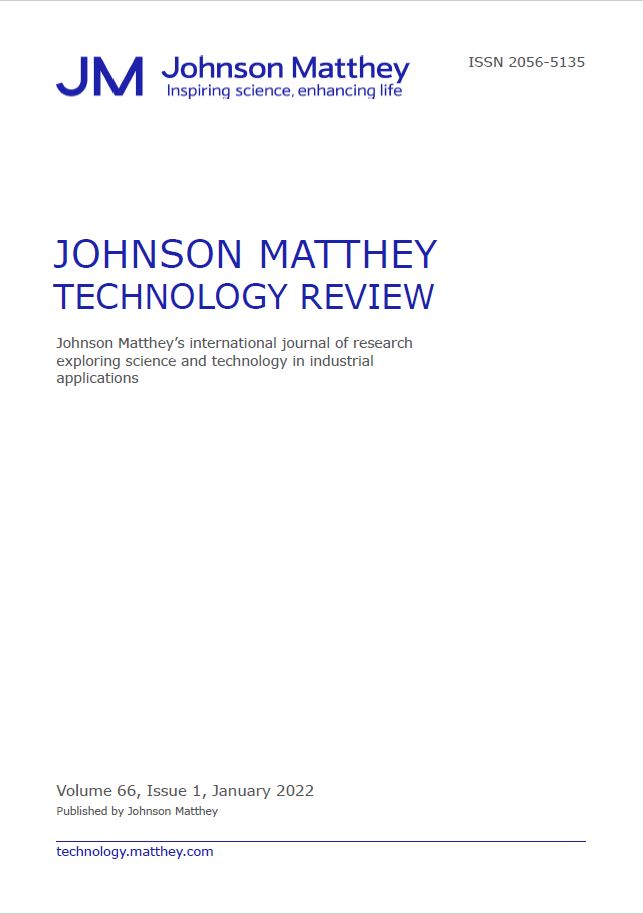-
oa 3D-Printed Photoelectrochemical Cell and its Application in Evaluation of Bismuth Vanadate Photoanodes
Synthesis, cell design and testing
- Source: Johnson Matthey Technology Review, Volume 66, Issue 4, Oct 2022, p. 386 - 392
-
- 30 Nov 2021
- 23 Feb 2022
- 24 Feb 2022
Abstract
Bismuth vanadate (BiVO4) is proven to be a promising photocatalyst for water splitting. However, the effect of materials syntheses, electrode preparation and size of photoelectrode on the photocurrent output of BiVO4 photoanodes needs further investigations. In this study, three different BiVO4 nanoparticle synthesis were employed, namely hydrothermal (HT), HT in the presence of ethylene glycol (EG) and HT with the addition of hydrazine hydrate (HH). In addition, two molecular inks (Triton-X and ethyl‐methyl‐imidazole, EMI), were compared for the preparation of BiVO4 photoanodes using a simple doctor-blade technique followed by calcination at 450°C. The photoanodes (9 cm2 active surface) were then compared for their photocurrent density at AM1.5G illumination and 1.2 V (vs. standard hydrogen electrode (SHE)) bias in a specifically designed, three-dimensional (3D)-printed electrochemical cell. The highest photocurrent 0.13 ± 0.1 mA cm–2 was obtained with the EMI ink, whereas tenfold lower photocurrent was obtained with Triton-X due to the higher charge transfer resistance, measured by electric impedance spectroscopy (EIS). The photoresponse was reproducible and relatively stable, with only 8% decrease in five consecutive illumination periods of 1 min.


